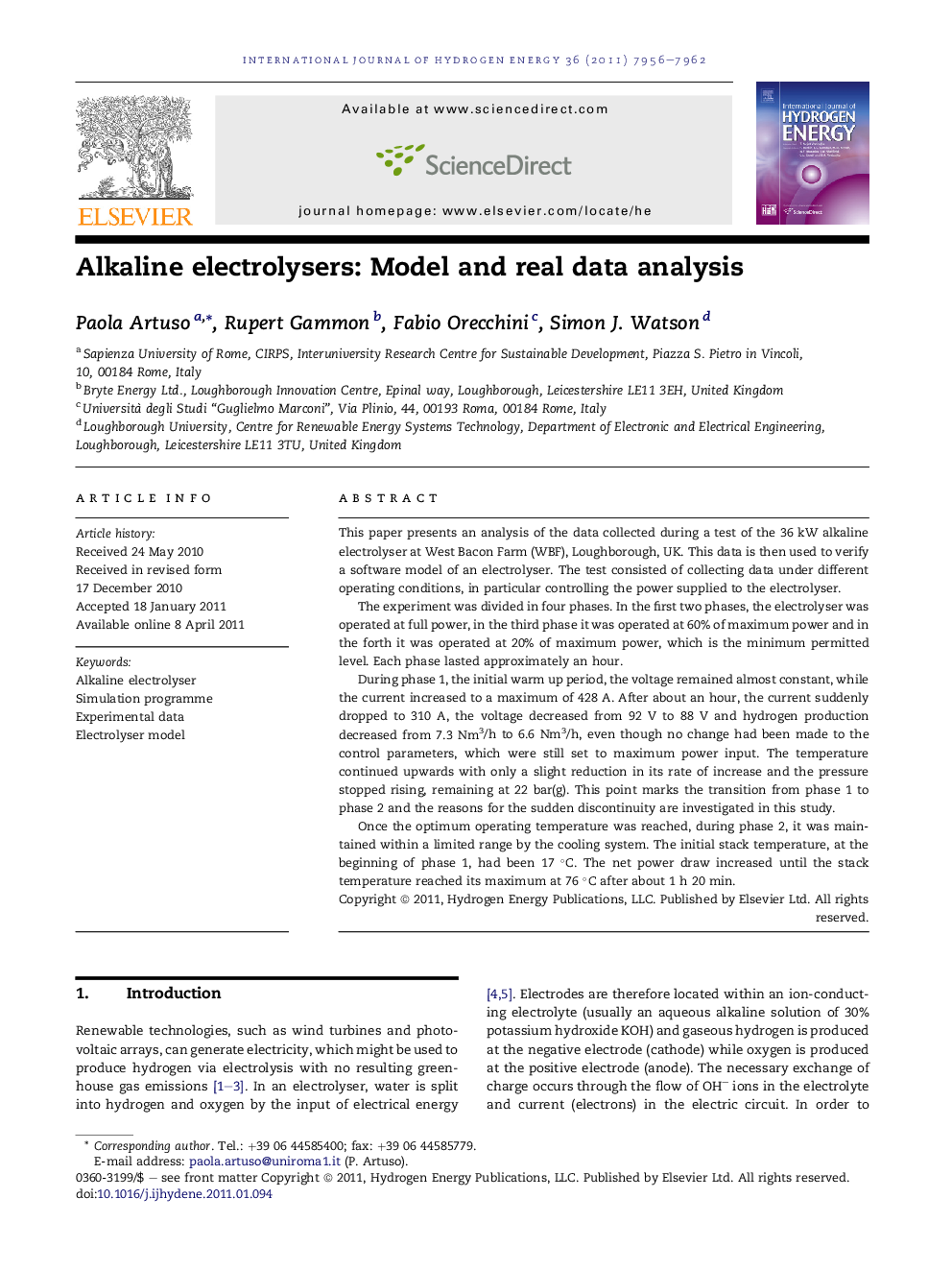| Article ID | Journal | Published Year | Pages | File Type |
|---|---|---|---|---|
| 1279336 | International Journal of Hydrogen Energy | 2011 | 7 Pages |
This paper presents an analysis of the data collected during a test of the 36 kW alkaline electrolyser at West Bacon Farm (WBF), Loughborough, UK. This data is then used to verify a software model of an electrolyser. The test consisted of collecting data under different operating conditions, in particular controlling the power supplied to the electrolyser.The experiment was divided in four phases. In the first two phases, the electrolyser was operated at full power, in the third phase it was operated at 60% of maximum power and in the forth it was operated at 20% of maximum power, which is the minimum permitted level. Each phase lasted approximately an hour.During phase 1, the initial warm up period, the voltage remained almost constant, while the current increased to a maximum of 428 A. After about an hour, the current suddenly dropped to 310 A, the voltage decreased from 92 V to 88 V and hydrogen production decreased from 7.3 Nm3/h to 6.6 Nm3/h, even though no change had been made to the control parameters, which were still set to maximum power input. The temperature continued upwards with only a slight reduction in its rate of increase and the pressure stopped rising, remaining at 22 bar(g). This point marks the transition from phase 1 to phase 2 and the reasons for the sudden discontinuity are investigated in this study.Once the optimum operating temperature was reached, during phase 2, it was maintained within a limited range by the cooling system. The initial stack temperature, at the beginning of phase 1, had been 17 °C. The net power draw increased until the stack temperature reached its maximum at 76 °C after about 1 h 20 min.
